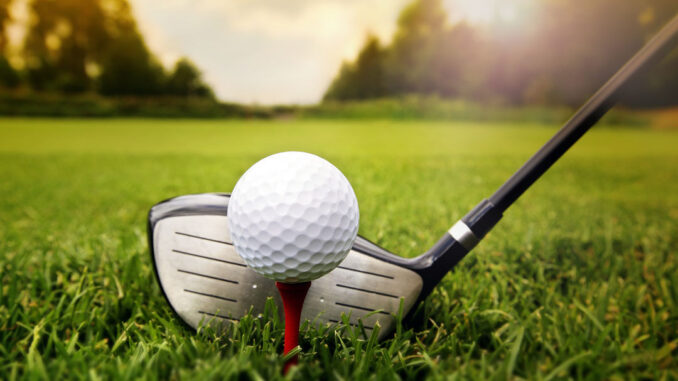
“Golf is an exercise which is much used by a gentleman in Scotland … man would live 10 years the longer for using this exercise once or twice a week.”- Dr. Benjamin Rush (1745 – 1813)
The more things change, the more they stay the same. The above quote from one of the signers of the American Declaration of Independence, a learned man often called the “father of American psychiatry,” wrote about the restorative powers of golf in his 1772 booklet: “Sermons to Gentlemen Upon Temperance and Exercise.” Beyond the sexist language (i.e. this advice was only aimed at men), which one can ignore today, Rush was onto something and so were the Scots.
On my bookshelf, I have the fascinating read, “How the Scots Invented the Modern World.” The non-fiction book examines the Scottish Enlightenment and how – during the 18th and early 19th centuries – individuals in Scotland made many intellectual and scientific discoveries that helped shape modern society. While the title strays towards hyperbole, the reality is that my ancestors were innovators and left an impact on future generations with their inventions.
Take golf. The sport originated on the eastern coast of Scotland, near Edinburgh. Originally, the game saw players hit a pebble with a bent stick or club over sand dunes and around tracks. Fun fact: the sport became so popular that King James II banned golf in 1457 because people were playing so much that they forgot about their military training. This edict did not last, and most people ignored the king’s decree. In 1502, King James IV of Scotland gave golf the royal seal of approval and the nation became the world’s first golfing monarch.
More than 500 years later, the Scots have developed yet another sensible prescription. Recently, the R&A and the University of St. Andrews School of Medicine partnered with several other groups to pilot an initiative called “Golf for Health,” by which physicians prescribe golf to individuals/patients to encourage a more active lifestyle. I’ve written in the past about the numerous health benefits of golf – both physical and mental – so this is no surprise, but what makes it fascinating is that medical professionals are actually prescribing a daily dose of golf.
GP doctors in Fife, known worldwide as the home of golf – boasting more than 40 courses – were invited to participate in this pilot initiative that initially partnered with four local golf clubs and offered a six- to eight-week free program. Thirty golfers took part in the initial pilot, with another round expected this spring for eligible primary care patients to be prescribed golf activities. One participant touted the effectiveness of the pioneering pilot program by saying: “It’s helped me get out in the fresh air and meet other people. The health benefits for me have been 10, 20, 30-fold.” Once the findings of this pilot have been evaluated, assessments will be done to assess the feasibility of rolling out the program across Scotland and the U.K.
Past research has shown that, on average, golfers live for five years longer than non-golfers while golf, as a physical activity, can help prevent and treat 40 major chronic diseases, including diabetes, heart attacks, stroke, breast and colon cancers, depression and dementia. A recent Finnish study, published in the British Medical Journal Open, suggests that playing golf may be more effective in reducing the risk of developing cardiovascular diseases than Nordic walking. According to the World Health Organization, insufficient physical activity is the fourth-leading risk factor for mortality. People who are insufficiently physically active have a 20-30 per cent increased risk of all-cause mortality, compared to those who engage in at least 30 minutes of moderate-intensity physical activity most days of the week.
Ball Bifurcation: Why Care?
Watch a PGA Tour event on any given weekend and you are sure to become stupefied at some point in the broadcast after witnessing players drive a 385-yard par 4. In mid-March, two of the most powerful governing bodies in golf (the USGA and R&A) announced their intention to roll back the golf ball for elite competitions to try and address these ridiculous distances off the tee. The basic idea is that, come 2026, the pros (in competitions which agree to this change) would use a different ball and – in essence – play by a different set of golf ball rules than the rest of us. Why? Because some people (i.e. those in charge) feel that today’s balls allow pros to make a mockery of many modern courses.
For the rest of us, these advancements in golf ball technology have made the game more fun and accessible. So, while this announcement does not concern the average golfer, what this news item sparked for me was the broader question of the role which technology plays in our lives. From the ubiquitous use of our smartphones and tablets to asking Siri our burning questions and getting answers immediately, technology for the most part has made life easier – saving us time and making us more efficient. But these advancements also sometimes come at a cost. For example, my wife and I recently leased a new car and noticed that the operator’s manual was triple the size of the previous model’s. This was due mainly to all of the technological advancements and computer parts in these new cars that sure are cool but, if they break down, get ready to empty your wallet.
I digress. Back to the golf ball rollback and why it matters. When it comes to golf advancements, for the average player like you or me, these innovations are great news. Starting with those Scots, golf balls were originally made of goose feathers, wrapped in bull’s hide. Gutta percha (made with gutta percha gum boiled and shaped into balls) replaced the feather balls in the mid-19th century. Just like engineering (and the science behind skis has also made that sport easier for the first-timer), so too have advancements in golf ball and club technology ever since. Today, the science and chemistry that go into designing a golf ball is extensive. Teams of engineers spend years studying and researching how to manufacture a better ball and are constantly looking at ways to improve these flying spheres.
The bottom line is this: when choosing what ball to use off the tee this year, it is important to do your homework. Don’t just pick a ball that promises more distance, as these often require you to have a high swing speed to hit the ball farther. Instead, pick a 2- or 3-piece, low-compression ball that is also low spinning.
What are you waiting for? Stop reading my ramblings, get off of the couch and hit the links. Your body and your mind are sure to thank you. And, while you are at it, don’t forget to thank the Scots – past and present – who understood the importance of this sport.
